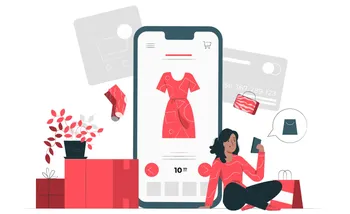Supermarket loyalty programs refer to initiatives designed by grocery stores to incentivize frequent customers to remain loyal to their store through various rewards, discounts, and points-based systems. These programs can range from simple punch card systems to complex digital platforms with advanced tracking capabilities that allow retailers to personalize offers based on shopping habits.
Supermarket loyalty programs have become increasingly popular over the past decade as more people seek out ways to save money and earn perks while doing their grocery shopping. These programs not only benefit consumers by providing tangible rewards, but they also provide retailers with valuable data insights that help them improve customer engagement, reduce churn, and drive sales growth.
While supermarket loyalty programs offer a range of benefits to both consumers and retailers, it's essential to understand the potential drawbacks and weigh the costs and rewards carefully before signing up for one. This article will explore the pros and cons of these programs in detail and provide practical tips for maximizing their benefits while minimizing their drawbacks.
II. Benefits of Supermarket Loyalty Programs
A. Discounts and rewards on future purchases
One of the most obvious benefits of supermarket loyalty programs is the opportunity to earn discounts or rewards on future purchases. For example, some stores offer a percentage off your total purchase amount for every dollar spent in-store or online. These discounts can add up over time, leading to significant savings for loyal customers.
B. Exclusive access to sales and promotions
Many loyalty programs also grant members exclusive access to sales, coupons, and other promotional offers. These deals may not be available to non-members, giving loyal customers a competitive edge when it comes to saving money on groceries.
C. Personalized offers based on shopping habits
Advanced tracking technologies enable some stores to offer personalized offers based on your shopping history, preferences, and behavior patterns. For instance, if you frequently buy diapers or baby food, the store may send you a coupon for a discounted price on these items next time you shop.
D. Opportunity to earn points or cashback
Some loyalty programs allow customers to earn points or cashback on purchases that can be redeemed for future savings or perks. These rewards may vary by program, but they can range from small bonuses for frequent purchases to significant discounts on big-ticket items like appliances or electronics.
III. Drawbacks of Supermarket Loyalty Programs
A. Concerns about data privacy and collection
One potential drawback of loyalty programs is the amount of personal information that's collected and shared between the retailer, their partners, and third-party vendors. Some people are uncomfortable with the idea of having their shopping habits tracked and analyzed, especially in light of recent data breaches and privacy scandals involving major retailers like Target and Whole Foods.
B. Risk of addiction or overconsumption
Another potential drawback is the risk of addiction or overconsumption, particularly if loyalty programs create a sense of FOMO (fear of missing out) around exclusive deals and promotions. Some people may be tempted to buy more than they need just to earn rewards points or take advantage of discounts, leading to overspending and wasted food.
C. Potential for program fatigue or abandonment
Finally, loyalty programs can become a source of frustration for customers if they're too complex, confusing, or time-consuming. For example, some programs require customers to scan multiple barcodes or use different apps on their phones, creating extra steps and hassle that may deter people from participating. Additionally, some programs have restrictive terms and conditions, such as blackout periods for sales or rewards expiration dates, which can make it difficult for customers to earn real value from the program.
IV. Tips for Maximizing Benefits and Minimizing Drawbacks
A. Read the fine print carefully
Before signing up for a loyalty program, be sure to read the terms and conditions carefully to understand how the program works, what rewards are available, and any restrictions or limitations that apply. This will help you avoid surprises down the road and ensure that you're getting the most value from the program.
B. Limit program fatigue
To avoid program fatigue, choose loyalty programs that are simple, intuitive, and easy to use. Look for programs that require minimal effort or hassle, such as digital apps with automatic rewards tracking, or programs with streamlined in-store experiences like quick scan or tap-to-pay options.
C. Set spending limits and stick to them
To avoid overspending or addiction, set a budget for your loyalty program spending and stick to it. This will help you stay within your means and prevent impulse buys that could lead to wasted food or money.
D. Use rewards wisely
When redeeming rewards, choose items that provide real value to you rather than settling for lower-quality options just to earn points. Additionally, look for opportunities to stack rewards with other discounts or promotions, such as using a coupon in conjunction with your loyalty program discount.
E. Monitor privacy settings and preferences
To protect your personal information, monitor the privacy settings and preferences on your loyalty programs and choose options that align with your preferences. This will help you balance the benefits of the program with your concerns about data privacy and security.
FAQ Section
Q: What are loyalty programs?
A: Loyalty programs are rewards systems offered by retailers, airlines, hotels, and other businesses that aim to incentivize repeat purchases or usage from customers. Members earn points, miles, cashback, or other benefits for each purchase or action they make with the business, which can then be redeemed for discounts, free products, or other rewards.
Q: How do loyalty programs work?
A: The exact mechanics of loyalty programs can vary widely depending on the specific program and industry. Generally, members sign up online or in-store, provide some personal information (such as their name, email address, or phone number), and then earn points or miles for each qualifying purchase or action they take with the business. These points or miles can then be redeemed for rewards at a later time, either through an online portal or by contacting customer service. Some programs also offer bonus points or miles for specific actions, such as referring friends to join the program or making a large purchase.
Q: Are loyalty programs worth it?
A: Whether loyalty programs are worth it depends on a variety of factors, including the type of business, the rewards offered, and your personal spending habits. Generally, loyalty programs can be a great way to save money and earn rewards if you're already making frequent purchases from a specific business or industry. However, it's important to carefully review the terms and conditions of each program to ensure that you understand how points are earned, when they expire, and any blackout dates or restrictions on redeeming rewards. Additionally, consider whether the rewards offered align with your needs and preferences. For example, if you prefer cashback over free products, look for programs that offer this option.
Q: How can I maximize my rewards from loyalty programs?
A: To get the most out of loyalty programs, follow these tips:
- Sign up for the program as soon as possible to start earning points or miles right away.
- Review the terms and conditions carefully to understand how points are earned, when they expire, and any restrictions on redeeming rewards.
- Look for opportunities to earn bonus points or miles for specific actions, such as referring friends or making large purchases.
- Consider whether the rewards offered align with your needs and preferences, and prioritize earning points or miles for the types of products or services you're already buying.
- Monitor your account regularly to ensure that all qualifying purchases are being credited correctly, and contact customer service if there are any issues.
- Stack rewards whenever possible by combining loyalty program perks with other discounts or promotions, such as coupons or sales.
- Redeem rewards before they expire to avoid losing out on potential savings or benefits.
In conclusion, loyalty programs can be a great way to save money and earn rewards, but they also come with their own set of drawbacks and considerations. By following these tips for maximizing benefits and minimizing drawbacks, you can enjoy the perks of loyalty programs without falling victim to addiction, overconsumption, or program fatigue.








